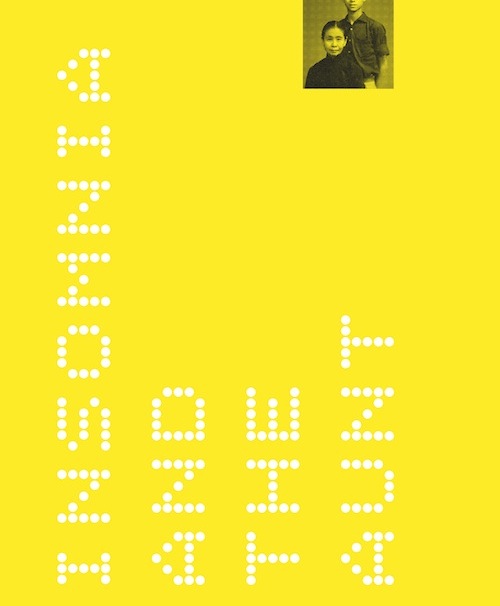Joshua Marie Wilkinson Reviews Tan Lin's Insomnia and the Aunt

Joshua Marie Wilkinson has certainly fulfilled his reviewing duties (very generously!!) with this one over at West Branch Wired. Wilkinson looks at books by Cole Swensen, Fanny Howe, Tan Lin, Anselm Berrigan, Anne Carson, and Cathy Park Hong. We especially like the read on Lin: "My favorite book in recent memory is Tan Lin's Insomnia and the Aunt [Kenning Editions, 2011]. It's a work of prose, featuring photographs throughout—and beyond those basic facts, well, it's difficult to characterize," he writes. More:
All Tan Lin's interests—and there are dozens actually—seem laid out simply here. Like [Cole] Swensen, Lin is using a kind of documentary prose to establish an apparent grounding, which he then thwarts and reworks to his own purposes. Instead of Swensen's caesurae, Lin uses the photograph to situate his prose (as documentary referent, as a kind of visual "proof" or evidence in support of the writing) as well as provide a sort of magical distraction from how unique the concerns of his prose actually are.
Like W.G. Sebald's use of images in prose, the photographs in Tan Lin's book—there are 7 or 8 of them interspersed throughout— stand both as reference points and counterpoint. They hang obliquely, without caption, summary, or any direct description. They seem to say, I am evidence and I'm here to illustrate the salient features of the text—but they defer to some other nonspace that heightens the peculiarity of the shifts in prose.
To my mind, Tan Lin is one of our best writers about race and immigration (and, as a result, tradition and heritage and family) because he's not interested in quaint insights, political correctness, or even shocking his readers. Lin is interested in language, and he's keenly aware—as few others are—of how language mediates and even produces our assumptions about subjectivity. Take a look at the figure of lying in Insomnia and the Aunt:
As Paul Newman said, lying is a highly flirtatious and mechanical form that the body has of creating a gene pool. For this reason lying is never natural (in the reproductive sense) and is best expressed with the eyes, whose motions are perceived to be distinct from the somaform and somatic expressions. Everyone thinks you can make love with your eyes but really the only thing you can do with your eyes is lie with them. People who cry a lot tend to have more affairs than those who don't. Lying and having sex are best done with the eyes completely closed. To lie and have sex at the same time is one of the greatest things anyone can do. It is of course much harder to lie when staring directly at someone or something (like food) that one likes. It is impossible to lie to a computer that's turned off. A blank computer screen can still remind us of a face.
The most arresting aspect of Lin's prose is his shift from the specific story of visiting his aunt at her motel in Washington State to his peculiar general statements. Starting with something as improbable as a celebrity source (he cites Robert Redford earlier on the same topic), Lin moves into an eerie generalized prose of "lying is never natural...and is best expressed" and on to all-encompassing statements like "Everyone thinks you can make love with your eyes," "People who cry a lot tend to have more affairs," and "It is impossible to lie to a computer that's turned off." In other words, the lies take over the voice's subjectivity. It's unsettling, but somehow deeply a part of the prior narrative voice: this seamless/unsettling quality is Lin's achievement. We get woven into not just the story it wants to tell but also the lies of how it wants to process the story being told—which is to say, into its truths.
Read all of that, and the other reviews, here.


